 |
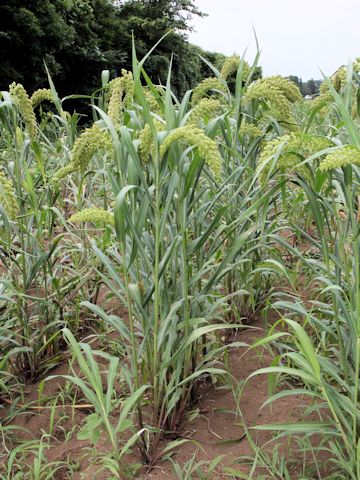

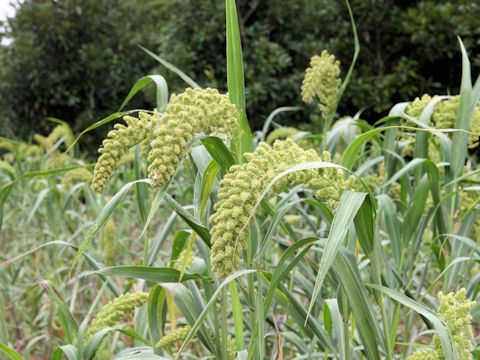

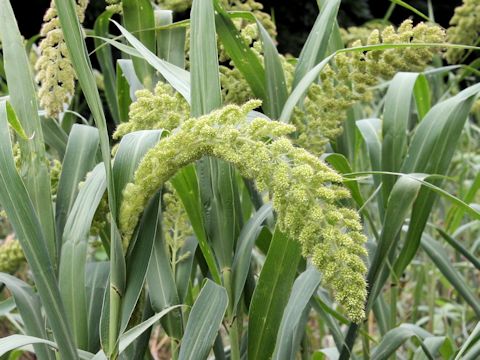

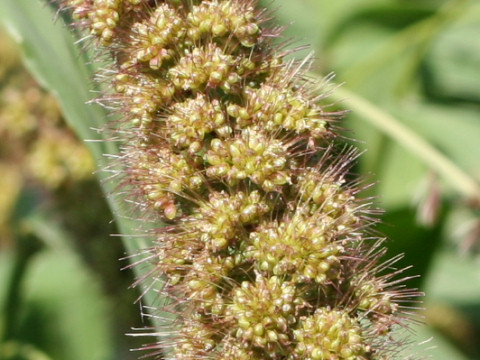

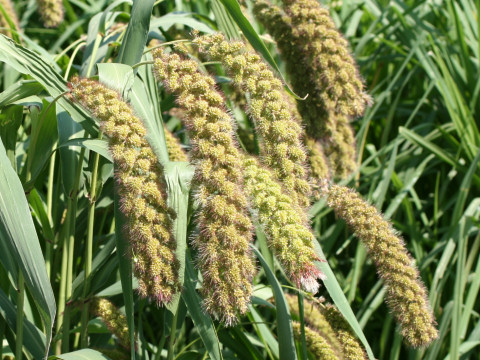

|

|
アジアの東部が原産と考えられ、わが国へは、縄文時代に伝わったとされてます。「えのころぐさ」から改良され、中国では古くから栽培されていました。五穀のひとつで、わが国でもコメの栽培より前から重要な食料のひとつとなっていました。「おおあわ」と「こあわ」があり、わが国で栽培されているのは、主として穂の大きい「おおあわ」です。8月から9月ごろ、茎の先に円柱状の花穂を伸ばします。種子はお粥やもち、菓子などの原料や、小鳥の餌にもなります。写真中3・下の品種は戸隠在来種。中国語では「粱(liang)」と呼ばれます。C4植物(C4型光合成を行う植物)です。
|

|
イネ科エノコログサ属の多年草で、学名は Setaria italica。英名は Foxtail millet。
|

|
The Foxtail millet (Setaria italica) belongs to Poaceae (the Grass family). It is thought to be native to eastern Asia. It is an improved variety of "Green bristle grass" (Setaria viridis) and it has been cultivated from long ago in China. It was introduced into Japan in the Johmon period (3-4 thousand years ago). It is one of Chinese five cereals, also it was one of mainly cereals in Japan. There are two species ("Oo-awa" and "Ko-awa"), and "Oo-awa" is mainly cultivated in Japan. The cylindrical spikes are borne at the top of stems from August to September. The seeds are used as ingredients of rice porridge or cake, and also as a feed of pet birds. The varieties in the 4th and bottom of the photo are "Togakushi-zairai". In Chinese, it is called "粱" (liang). It is a C4 plant (Plants with C4-type photosynthesis).
|

|
[上・中1〜2] 千葉県香取市大角にて、2012年08月20日撮影。
[中3・下] 長野県南箕輪村「信州大学農学部」にて、2005年08月29日撮影。
|






